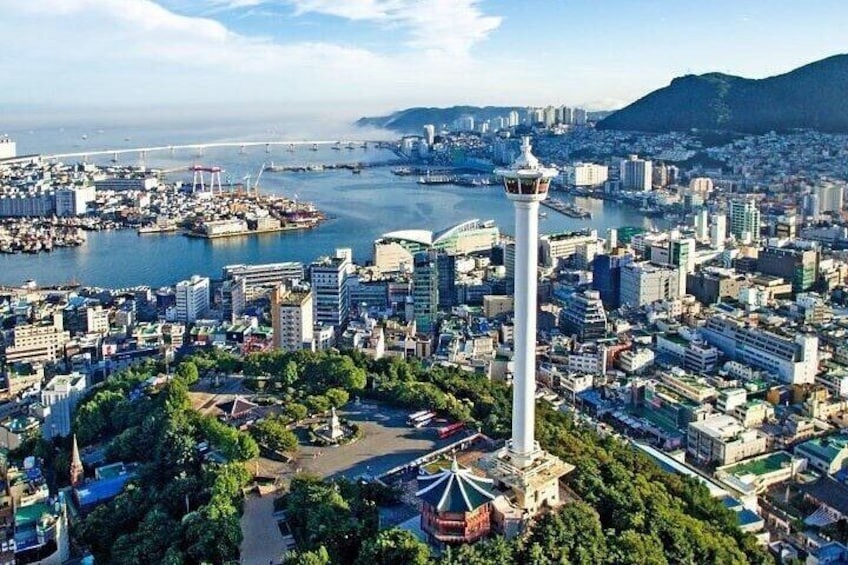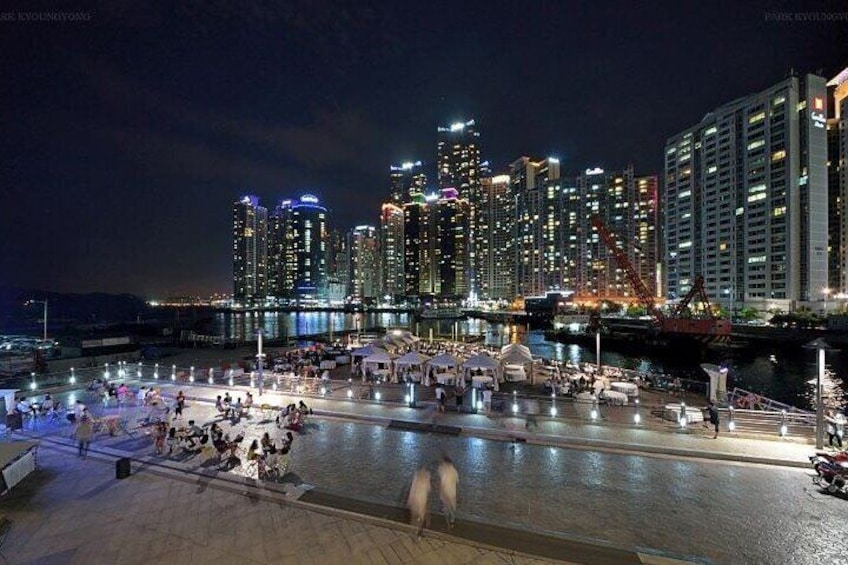Members save 10% or more on over 100,000 hotels worldwide when you’re signed in





4-Day STAY in Busan + Geoje + Gyeongju Customized tour
Features
- Free cancellation available
- 4d
- Mobile voucher
- Instant confirmation
- Selective hotel pickup
- Multiple languages
Overview
From ancient times to the present, Busan has been a city of natural beauty, where mountains, sea, and rivers harmonize to create a wonderful landscape and a center of transportation and trade hub.
To the east of the surrounding city, you can see the splendid Buddhist culture of the Silla Kingdom in Gyeongju, the 1000-year-old capital of the Silla Kingdom, and learn about the lifestyle and philosophy of ancient Koreans through the tombs of the Silla kings and nobles.
Geoje Island is the second-largest island in Korea after Jeju Island. we will take a cruise to visit the Botanical Garden, a filming location for famous movies and TV shows, and then see a Korean War POW camp history.
It can be a memorable trip by booking a hotel in Busan without the hassle of lodging while visiting interesting stories and attractions from local guides in nearby cities and enjoying the abundant culture, history, scenery, and various famous local foodies for 4 days on your customized private trip.
Activity location
- Haedong Yonggungsa Temple
- 86 Yonggung-gil
- Yonggung-gil, Busan, South Korea
Meeting/Redemption Point
- Haedong Yonggungsa Temple
- 86 Yonggung-gil
- Yonggung-gil, Busan, South Korea
Check availability
Korean driver without Guide in English
- 4d
- Opening hours: Sat 8:00-11:30
- English
Sedan, Mini Van, Mini Bus: Private transport with Korean driver (Simple English)
Pickup included
With Guide (1-7 pax) in Multilingual
- 4d
- Opening hours: Sat 8:00-11:30
- English
Sedan, Mini Van: Small private Group and Airport Pick-up
Pickup included
With Guide ( 8-15 pax ) in Multilingual
- 4d
- Opening hours: Sat 8:00-11:30
- English
Large Van, Mini Bus: Large private Group and Airport Pick-up
Pickup included
What's included, what's not
- Private transportation
- Night tour
- Guide + driver or driving guide
- Airport ( PUS ) pickup and drop-off
- Gas + toll + parking fees
- Hotel and accommodation are not included
- Meals and admission fees payable on the spot
Know before you book
- Wheelchair accessible
- Infants and small children can ride in a pram or stroller
- Public transportation options are available nearby
- Transportation options are wheelchair accessible
- Suitable for all physical fitness levels
Activity itinerary
Day 1: Busan South-East ( Pick-up Busan KTX train station, Hotel, Airport ) check-in Busan
- 12 stops
- Meals: Not included
- Accommodation: Not included
Haedong Yonggungsa Temple
- 1h
Daebyeon Port Entrance
- 40m
기장시장
- 1h
Haeundae Dalmaji-gil Road
- 20m
Songjeong Beach
- 20m
Haeundae Beach
- 40m
Dongbaekseom
- 1h
Shinsegae Centum City
- 1m
Busan Cinema Center
- 30m
UN Memorial Cemetery in Korea
- 40m
Igidae Park
- 40m
Oryukdo Skywalk
- 30m
Day 2: Geoje Island: Round trip ( Pick-up Busan Hotel and check-in Busan Hotel )
- 10 stops
- Meals: Not included
- Accommodation: Not included
Gadeokdo Service Area
- 30m
Geoga Grand Bridge
Jangseungpo Cruise Reservation Center
- 30m
- Admission ticket not included
OEDO Botania
- 3h
- Admission ticket not included
Historic Park of Geoje POW Camp
- 1h
- Admission ticket not included
Hakdong Mongdol Beach
- 30m
Geoje Panorama Cable Car
- 1h
- Admission ticket not included
Windy Hill
- 30m
Sinseondae
- 30m
Yeocha-Hongpo Coastal Road
- 40m
Day 3: Gyeongju UNESCO: Round trip ( Pick-up Busan Hotel and check-in Busan Hotel )
- 9 stops
- Meals: Not included
- Accommodation: Not included
Seokguram Parking Lot
- 1h
- Admission ticket included
Bulguksa Temple
- 1h
- Admission ticket included
Daereungwon Tomb Complex
- 40m
- Admission ticket not included
Gyeongju Folk Craft Village
- 30m
Gyeongju Gyochon Traditional Village
- 30m
Gyeongju National Museum
- 1h
Cheomseongdae Observatory
- 20m
- Admission ticket not included
Bomun Lake
- 30m
Donggung Palace and Wolji Pond
- 40m
- Admission ticket not included
Day 4: Busan South - West: ( Pick-up Busan Hotel and drop-off in Busan )
- 12 stops
- Meals: Not included
- Accommodation: Not included
Songdo Beach
- 40m
Taejongdae
- 40m
Huinnyeoul Culture Village
- 40m
Busan Modern History Museum
- 40m
Busan Gamcheon Culture Village
- 40m
- Admission ticket not included
Gwangbok-ro Fashion Street
- 30m
Gukje Market
- 30m
Busan Tower
- 40m
- Admission ticket not included
Jagalchi Market
- 1h
Parking hwangryeongsan bongsudae
- 40m
Marine city 3-ro
- 30m
Gwangalli Beach
- 30m
Location
Activity location
- Haedong Yonggungsa Temple
- 86 Yonggung-gil
- Yonggung-gil, Busan, South Korea
Meeting/Redemption Point
- Haedong Yonggungsa Temple
- 86 Yonggung-gil
- Yonggung-gil, Busan, South Korea